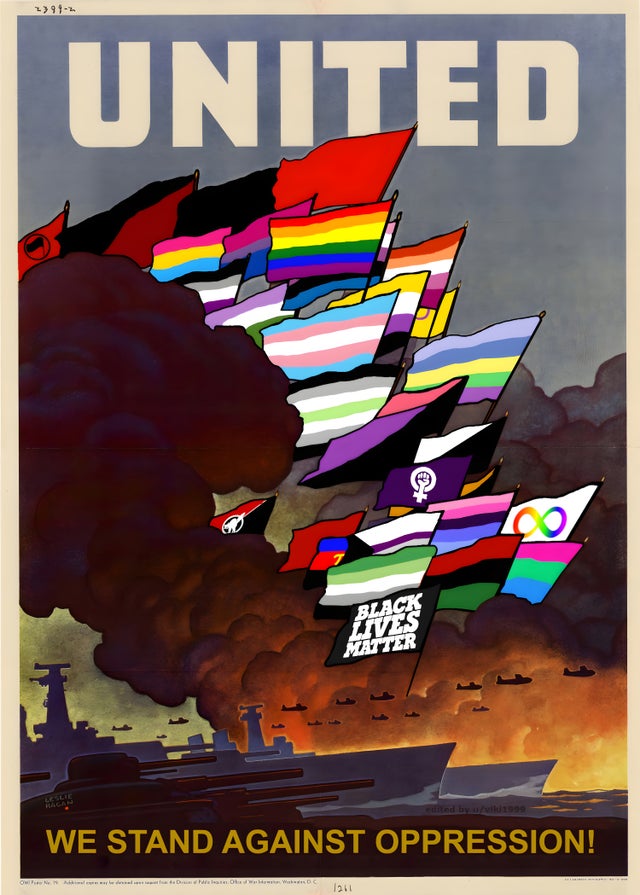I'm indigenous, and my culture is a shadow of its former self. This got me thinking: what sort of a world would it be where indigenous cultures are all thriving everywhere? Then I followed that thought for way too long and built an alternate history world.
It would be a world of strong local flavor: everywhere you go, there's vernacular architecture, traditional clothing, local food. Inuit cultures rule the Arctic. Aztecs rule Mesoamerica.
I've written an alternate history that I won't bore you with. Imagine there was never a 'Great Divergence' (where the West pulled ahead) but instead various cultures developed at roughly equal speeds, and maybe shared technology more rather than use technology to exploit/oppress.
Technical services are on a guild-system. The guilds recruit young people, train them up, and each local community (tribe, if you like) has a deal with the important guilds: you give us your services and we give your members food, board, other privileges. This explains why technology (like the steam engine) spread around the world without being used by one culture to oppress another. A person would have tribe-membership, with its duties and perks, and maybe guild-membership too, with its duties and perks.
The Americas and Australia are totally different in this alternate history, because they never got Europeanised. Imagine a developed (21st century) Aztec culture, Cree, Inca etc. with the internet and electricity and so forth. Every culture is in its bloom of glory – it's a world of strong culture. I understand this opens me to charges of exoticism, but counterpoint: my own culture (not gonna doxx myself) is among them. Some worldbuilding is all about physics, some is all about military theory; this is all about anthropology, all the strange and fabulous variety of human religions, fashions, food.
There are international elements to counter the extreme localism. In the alternate history, in the age of the steamship and telegram, international culture emerged. (This 'internationalist' phase actually happened in the mundane world as well: the first modern Olympics was in 1896; Esperanto appeared in 1887. It just wasn’t very successful.) Speak your local languages at home: the internet, academia etc. are in the global language. There’s art in local languages (storytelling, etc.) and there's international culture in the international language – the equivalent of The Simpsons or Star Wars that you can joke about when speaking with someone from the other side of the world.
Another internationalist element would be cultural exchanges. Imagine you’re a Rus in Russia, and a Himba troupe come to stay in your community for three nights, do dance and storytelling, share your food, flirt. This is a form of diplomacy.
Thriving indigenous cultures implies thriving ecosystems, as the two are inseparable. So it’s kind of a solarpunk/environmentalist world. Which fits with the idea of local economies/local cultures.

How the the continents of the Americas or Australia or really any other places that were subject to European colonization would look today without the advent of said colonization has always been on my mind, but I can never really imagine them in detail due to a lack of knowledge about their cultures or how they would develop in an alternate fictional scenario that diverges from our own.
Australia
Here's a cool map of Australia: https://i.ibb.co/PWB1Nhy/map-221445.png
I think Australia could be almost fully hunter-gatherer, because of its low population density.
The trickiest bit about Australia is the architecture. There really doesn't seem to be much evidence of indigenous architecture. The book 'Gunyah, Goondie and Wurley: the Aboriginal Architecture of Australia' gives some attempt.
Australia generally had no class distinction: https://d-place.org/parameters/EA066#1/30/153
And no slavery: https://d-place.org/parameters/EA071#1/30/153 , https://d-place.org/parameters/EA070#1/30/153
People are more nomadic than settled: https://d-place.org/parameters/EA030#1/30/153 (This is generally a difference between the world I'm building and the mundane world; a large percentage of people live nomadic lives, including in North America, Central Asia, etc.)
Nomads move about 14 times a year: https://d-place.org/parameters/B013#1/29/169
Move about 100km a year at the coast, 500km inland: https://d-place.org/parameters/B014#3/-29.38/144.14 (The Gidjingali, to give a counterexample, are a sedentary people, probably because there's good fishing there)
No money: https://d-place.org/parameters/B033#1/29/169 (This is a major point about the world I'm building; there's no money. There's an economic system of duties and perks.)
Possum cloaks: https://aiatsis.gov.au/explore/possum-skin-cloak
Bush tucker: https://en.wikipedia.org/wiki/Bush_tucker
So my version of Australia is mostly nomadic hunter-gatherers, but they have solar panels, batteries, vehicles. When they go on their huntgather walks, they use vehicles like this – in actual fact they made it work with just walking (no wheels), so with a vehicle like that it should work and be easier. Another thing that would be important around the world I'm building, but especially in Australia is airships: they're solarpunk, use very little energy, don't require roads.
South America
South America divides broadly into three cultural zones: the Andes where’ve got groups like the Inca, the Amazon where you’ve got groups like the Tupí-Guaraní, and the Southern Cone where you’ve got groups like the Mapuche. Here’s the broad map
Here are two more detailed maps: 1, 2
Generally no class distinction in the Amazon: https://d-place.org/parameters/EA066#1/30/153
Southern Cone people include people of the canoe, the Mapuche with their trademark hats with brims, and people whose lives are tied to llama-alpaca herds.
The Incans had a welfare state and sophisticated agriculture, with lots of root crops: obviously the potato, also other lesser known ones like maca.
Caribbean
Taíno + Arawak + Carib people. They eat the hutie. Mangroves are an important ecosystem
North America
Map of broad cultural areas.
Generally no class distinction in North America: https://d-place.org/parameters/EA066#1/30/153
North America is not the population centre of the Americas; central America is: https://en.wikipedia.org/wiki/Population_history_of_Indigenous_peoples_of_the_Americas